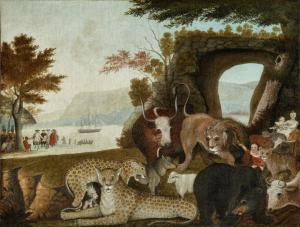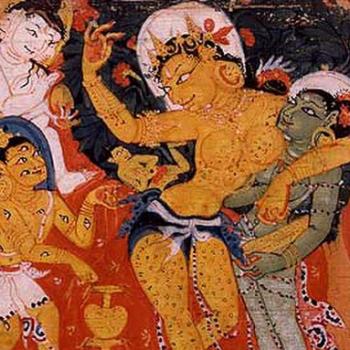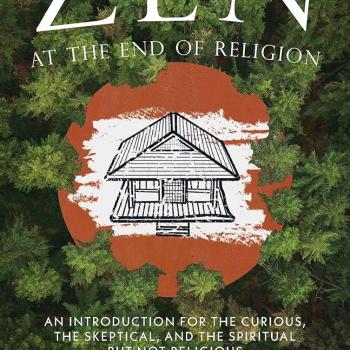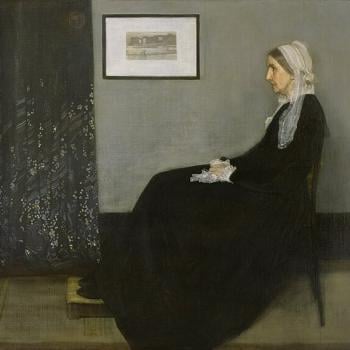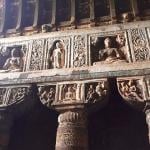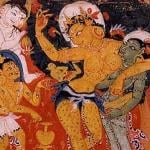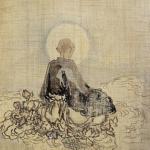“If I am asked to define my personal tastes in religion I must say that they lie between Mahayana Buddhism and Taoism, with a certain leaning toward Vedanta and Catholicism, or rather the Orthodox Church of Eastern Europe.”
Alan Watts
I believe that some sort of perennialism or universalism is the undercurrent of modern Western spirituality. That is a very large percentage of people within our culture assume that “all religions are different paths up the same mountain.”
I dig into this from time to time, often digging into some earlier thoughts on the subject and giving them a bit of a polish and hopefully putting them into a more useful order. Today I do that again…
The Wikipedia article on the “perennial philosophy” describes this view having roots that rise in the Renaissance as a kind of Neo-Platonism and its focus on a One from which all existence emanates. The philosopher Giovanni Pico della Mirandola sought harmonies between Classical Greek thought, Islam, and Jewish mysticism. The term “perennial philosophy” was coined near the beginning of the sixteenth century by Agostino Steuco.
In modernity this sense of a perennialist current has been advocated in the Twentieth century by Titus Burckhardt, Martin Lings, Jean-Louis Michon, Marco Pallis, Huston Smith, Hossein Nasr, Jean Borella, and Julius Evola. Also tied in closely with this view of a perennial wisdom underlying the world’s religions are the Traditionalists, which includes some of those just named, but as a school is principally identified with René Guénon, Ananda Coomaraswamy and Frithjof Schuon. Traditionalism adds in its own specific wrinkles regarding what exactly is the perennial teaching.
According to Wikipedia, the “more popular interpretation (of this impulse) argues for universalism, the idea that all religions, underneath seeming differences point to the same Truth. In the early 19th century the Transcendentalists propagated the idea of a metaphysical Truth and universalism, which inspired the Unitarians, who proselytized among Indian elites. (Not to mention an interesting feedback loop between mid Nineteenth Century Zen Buddhism and Unitarianism.)Towards the end of the 19th century, the Theosophical Society further popularized universalism, not only in the western world, but also in western colonies. (And) in the 20th century universalism was further popularized in the English-speaking world through neo-Vedanta…” Here I would also add in a footnote on the feedback loop between Neo-vedanta, or, I really prefer Vedanta and Universalism.
Here the circle closes with Aldous Huxley who loops in Traditionalism and Universalism in his “book The Perennial Philosophy, which was inspired by neo-Vedanta and the Traditionalist School.”
I respect the perennialists, and at the same time am wary of them, and particularly how some strands of fascism, or perhaps more properly Neo-fascism have woven into the Traditionalist variants. And on balance its the universalists who have been more influential to me. It is probably not insignificant I’ve spent much of my working life as a Unitarian Universalist minister.
And, of course, for me, there’s also Buddhism. And its unique insights. Especially I think as addressed by some contemporary Buddhists. Here I find myself turning to David McMahan’s The Making of Buddhist Modernism:
“That we live in a radically interconnected world has become a truism. Indeed, this age of internationalism and the internet might well be called the age of inter: there is nothing that is not interconnected, interdependent, interwoven, interlaced, interactive, or interfacing with something else to make it what it is. Thus, any religious tradition that can claim “interdependence” as a central doctrine lays claim to timely cultural resonance and considerable cultural cachet.
It is not surprising then that this term has been emerging with greater and greater frequency in contemporary Buddhist literature and acquiring increasing consonance with other modern discourses of interdependence. Sometimes used to translate the term pratītya-samutpāda (more precisely translated “dependent origination” or “dependent co-arising”), this term’s semantic field has now extended to represent what many today see as the fundamental outlook of Buddhism—a doctrinal sine qua non with broad-ranging implications on personal, social, and global scales. It is not only a philosophical description of the world but also an idea with powerful ethical and political implications: if we are all part of a vast, interdependent network of being, what we do can have profound effects on others as our actions reverberate throughout it.
As articulated in contemporary Buddhist literature, the concept of interdependence combines empirical description, world-affirming wonder, and an ethical imperative. The empirical description represents the world as a vast, interconnected web of internally related beings—that is, whose identity is not a priori independent of the systems they are a part of but is inseparable from those systems. Description of this web sometimes melds indistinguishably with descriptions of other interrelated processes like communication networks or biological systems. The contemporary Vietnamese Zen master Thich Nhat Hanh has coined the term “interbeing” to capture the idea of the interdependence of all things, presenting it in an accessible and playful style…”
Now, to be clear this understanding of interdependence may not be part of the earliest strata of Buddhist teachings, or, at least it is not fully developed in that earliest strata. But, it comes, and it is fully integrated into Buddhist teachings today and has been for a long time.
That said, a deep understanding of interdependence is the genuine heart of perennialism, a healthful universalism. And it is a bit more complicated than “all paths up a single mountain.” So, in practice I have a complicated relationship with perennialism. On the one hand I think it points in the right direction broadly when it suggests there are truths that each religion touch. This insight is a big reason I would eventually find myself a Unitarian Universalist.
On the other hand it doesn’t take terribly deep reading into the world’s religious traditions for me to see that there is not a single mountain and that all religions are following their separate paths up to the same summit. Lots of different mountains. And. Some are more useful than others. Which is probably why Zen Buddhism and its disciplines remains the core of my actual interior life.
For it to work for me I believe perennialism needs a modifier. And I suggest that modifier is naturalistic. What I think Zen and any other spirituality that recognizes our interrelatedness can be best understood as a form of naturalistic perennialism.
At this point in my life the issue is this. I believe there are currents of religion that are rooted in our biology, and as something natural, also something that people can find within all religions. And I hope it would therefore be obvious also available without any religion at all. We are able to perceive our connections, not just intellectually, but intuitively, physically. Awakening, salvation, all those different words that point to some great healing of some terrible rift are about our totally human, absolutely natural ability to see into our interrelatedness.
This body knowing manifests in a number of possible ways. One inclines us toward ethics – what I see as an innate sense of the “fair,” a sense that things should be harmonious, what is good for the goose is good for the gander kind of proto-morality confusingly coupled with a deeply held desire to get one up, and with that an inclination to cheat. I believe pretty much all religious ethics arise out of these two things existing in tension.
But, what I would not like to be lost in this discussion around interrelatedness, interdependence, interbeing is the mystical aspect of this insight. By mystical I mean quite narrowly an apprehension of a root to all our individual consciousnesses. For most of the world’s religions this root is seen as God, and as profoundly personal. But Buddhism shows this does not have to be experienced that way. And, for me and my naturalistic turn, it is a pointing to our biology. We seem to have within the structures of our brains an ability to see at the same time that we are different and distinct and acting in our own interests, that there is a common place, we exist within an intimacy so profound it is fair to call it one.
That’s the universal message. We are called by the universe itself, and by our biology to know our radical interrelatedness, our interdependence, our interbeing. This is the ancient call of our hearts. And we all engage it personally, brining our own story, our own variations on the universal wounds, and the individual shape of our intuitions. And in this time and place we can and do some picking and choosing.
Always dangerous. A certain shallowness accompanies the spiritual but not religious impulse, where picking and choosing too often means embracing what feels good rather than what feels true. But, done with caution and with respect things emerge.
Putting it together in his life, Alan Watts tells us “If I am asked to define my personal tastes in religion I must say that they lie between Mahayana Buddhism and Taoism, with a certain leaning toward Vedanta and Catholicism, or rather the Orthodox Church of Eastern Europe.” I find profound resonances with his view. For me it would be Zen Buddhism, with sympathies going to Daoism and Western (writ large) Christian mystical traditions, particularly aspects of Eastern Orthodoxy, but mostly Anglicanism, all washed through a profoundly rationalist and naturalist sensibility.
But, it is all in service to an ancient sense, longing, glimpse shared across culture and time.
It is our breaking open and from that place finding a way to live and in time to die.
This is the secret of our healing in this broken world. This is a perennialism that makes sense to me. As I see it, this is our true universalism.
Just this.


